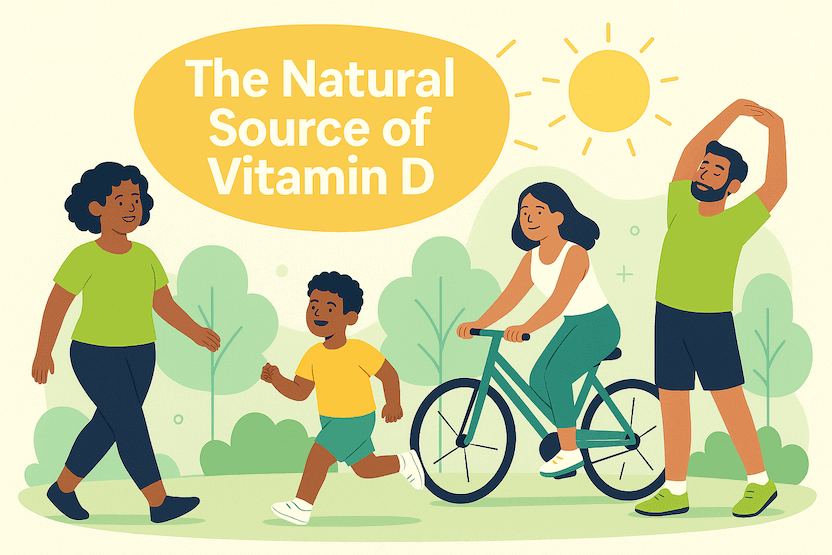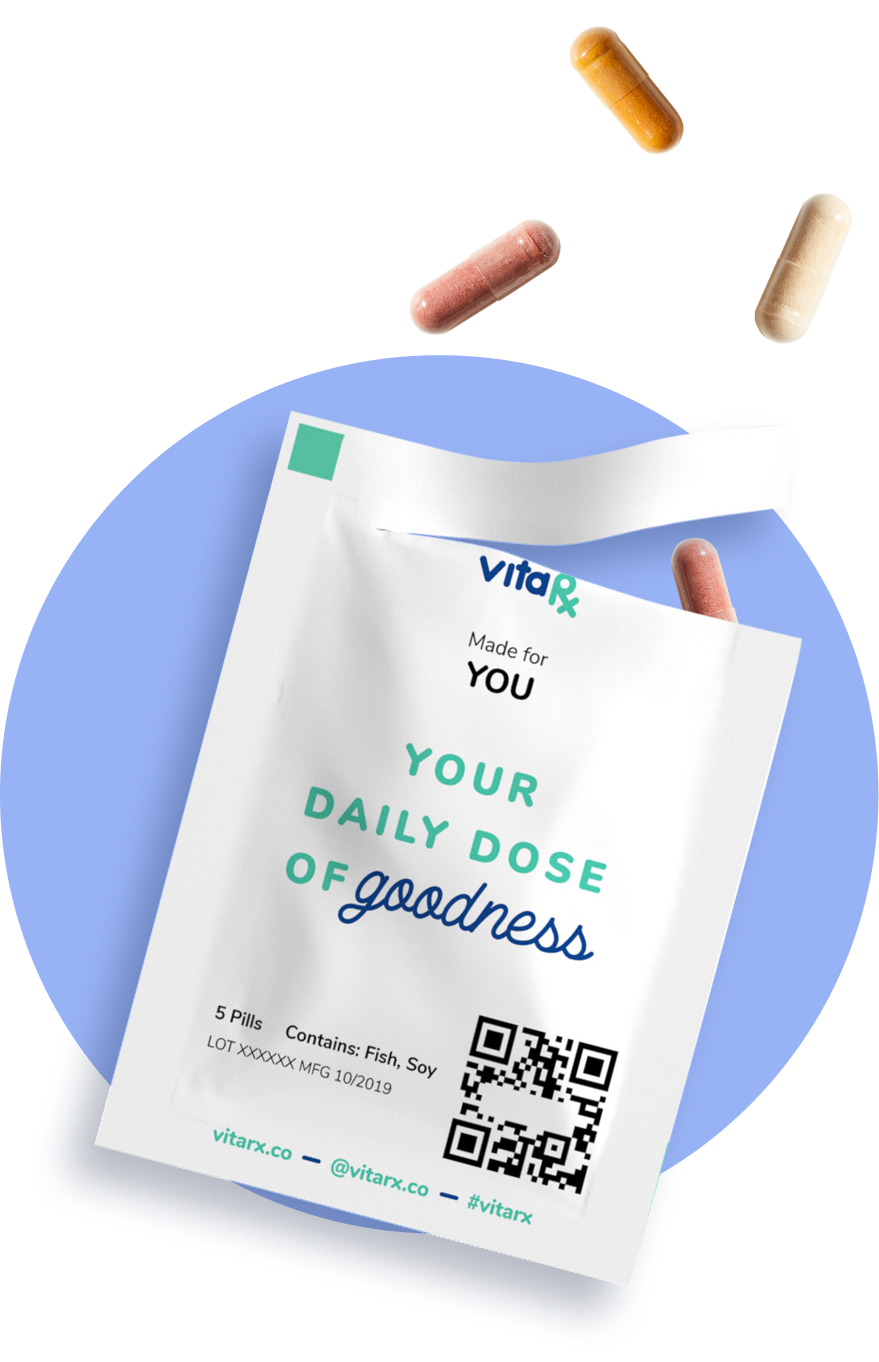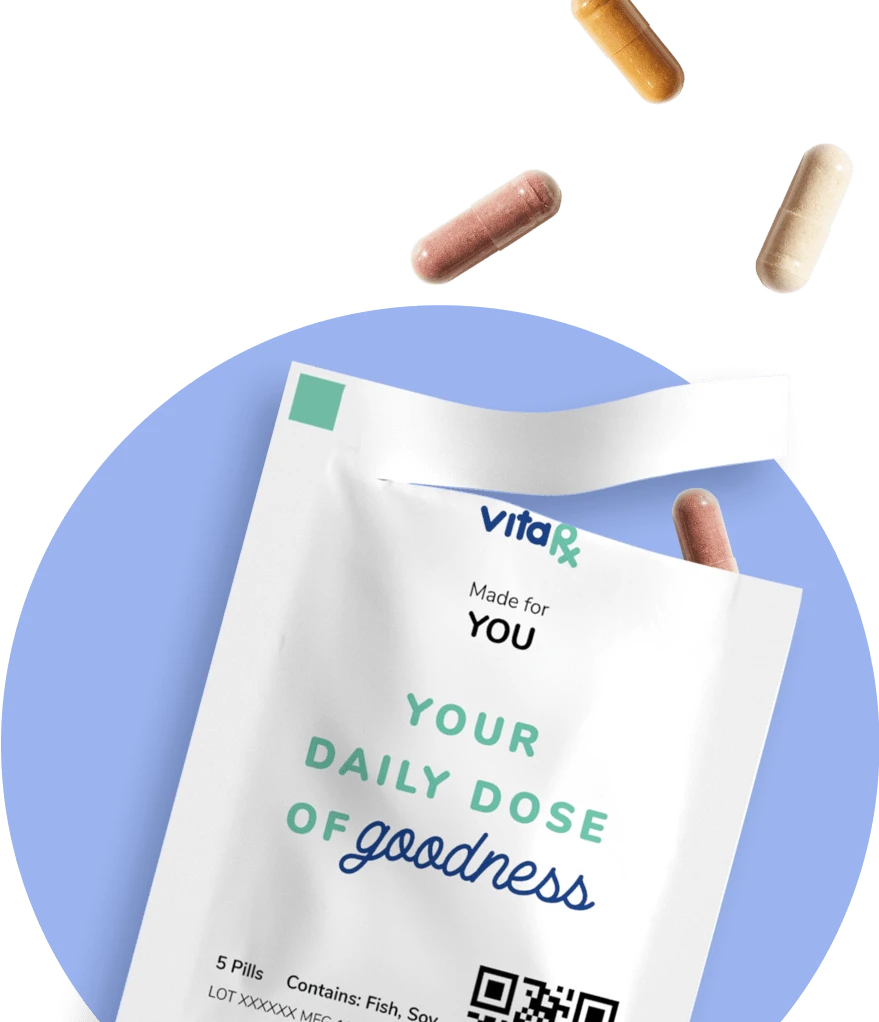Last update: July 2, 2025
4 minute read
Vitamin D Dosage Safety: What Are the Risks of Over-Supplementation and How Much Do You Really Need?
Learn everything you need to safely supplement Vitamin D. Find out recommended dosages, key factors affecting your needs, safe upper limits, and more.

By Derick Rodriguez, Associate Editor
Edited by Dr. Dimitar Marinov, MD, RDN, PhD

Did you know some studies suggest roughly 41% of Americans aren’t getting enough vitamin D—even though your bodies can literally make it from sunshine?
In a world packed with smoothies, fitness hacks, and immune-supporting supplements like this vitamin D guide, it’s surprising you’re still leaving your bones, brains, and immunity hanging. Bridging the vitamin D gap isn’t rocket science.
Figuring out how much you actually need—and how much can be too much—is where things get tricky. So, what exactly affects your vitamin D status, and should you consider supplementation?
Key takeaways
- Vitamin D is important for bone, immune, and brain health
- Safe intake depends on age, lifestyle, and existing health conditions
- Too much vitamin D supplementation can lead to harmful side effects
Understanding vitamin D
Vitamin D is produced by your body when skin is exposed to direct sunlight. Yet about 41% of people in the United States are still deficient. This gap highlights the importance of knowing the right dose—and the safety limits—before you supplement.
VitaRx Tip
Vitamin D acts more like a hormone—technically a prohormone—because of how it works in your body.
So, why doesn’t everyone get enough from the sun?
- Living at northern latitudes
- Regularly using sunscreen
- Spending lots of time indoors
- Wearing full-coverage clothing
- Having a darker skin tone

Recommended daily amounts
Vitamin D dosage depends on age, medical history, and sun exposure. Below are commonly referenced daily amounts:
Age Group | Recommended Daily Amount (IU) |
|---|---|
Children (up to 12 months) | 400 |
Ages 1 to 70 | 600 |
Over 70 | 800 |
Pregnant/lactating women | 600 |
Remember, these are baseline numbers for healthy individuals—your needs can shift if you have risk factors or limited sun exposure.
Should you use a vitamin D supplement?
Your skin does make vitamin D, but limited sunlight, darker skin, or aging can leave you short, groups at higher risk include:
- Older adults
- People with darker skin tones
- Anyone who spends little time outside
- Individuals with obesity or certain medical conditions
The only way to confirm a deficiency is with a blood test for 25-hydroxyvitamin D.
- Deficiency: < 20 ng/mL
- Insufficiency: 20–29 ng/mL
- Sufficient: ≥ 30 ng/mL
How much is too much?
Because vitamin D is fat-soluble, excess amounts can build up. Safe upper limits are:
Age Group | Upper Limit (IU) |
|---|---|
0–6 months | 1,000 |
7–12 months | 1,500 |
1–3 years | 2,500 |
4–8 years | 3,000 |
9 years+ | 4,000 |
Exceeding these levels for prolonged periods of time may lead to hypercalcemia—symptoms include fatigue, muscle weakness, and kidney issues. Toxicity usually develops after months of high-dose use (sometimes 10,000+/day), not from a single large dose.
VitaRx Tip
Vitamin D toxicity is rare and almost never stems from sun exposure or diet; it’s nearly always from over-supplementation.
Special considerations
Expert Group | Target Blood Level (ng/mL) | Suggested Intake (IU) |
|---|---|---|
Institute of Medicine | 20 | 600–800 |
Endocrine Society | 30 (at-risk groups) | 1,000–2,000 |
If you’re in a higher-risk group—osteoporosis, darker skin, obesity, or chronic illness—your healthcare provider may advise 1,000–4,000 IU daily. In certain cases (e.g., severe deficiency), doctors may prescribe even higher doses short-term under close supervision.
— Dr. Dimitar Marinov, MD, RDN, PhDVitamin D is critical for bone strength, immunity, and brain health, but chronically exceeding 4,000 IU/day can cause hypercalcemia and kidney damage. Individualize dosing—guided by 25-hydroxyvitamin D testing, sun exposure, age, and skin tone—and monitor levels regularly to stay within safe, evidence-based limits.
Quick checklist for safe vitamin D supplementation
- Test first: Know your baseline level.
- Stay within guidelines: Follow age-appropriate doses unless a professional directs otherwise.
- Add it all up: Count vitamin D from sun, food, and supplements.
- Consider risk factors: Age, skin color, weight, and existing conditions all matter.
- Re-test periodically: Especially if supplementing long-term.
- Verify quality: Look for USP, NSF, or ConsumerLab seals—dietary supplements are regulated under a different FDA framework than prescription drugs and are not pre-approved for safety or effectiveness before they reach the market.
Frequently asked questions (FAQ)
Here are some of the most frequently asked questions about vitamin D dosage safety.
Final thoughts
Vitamin D isn’t just another wellness trend—it’s a cornerstone of bone health, immunity, and overall vitality. Too little puts your health at risk, but so does too much. We urge you to get tested, follow evidence-based guidelines, and adjust your intake accordingly.
Sources and references
Editor

Derick Rodriguez
Derick Rodriguez focuses on editing health and wellness-related content. With over half a decade of experience in the digital realm, Derick has developed a unique skill set that bridges the gap between complex health concepts and accessible, user-friendly communication. His approach is deeply rooted in leveraging personal experiences and insights to illuminate the nuances of health and wellness topics, making them more approachable and empowering readers with knowledge and confidence.
Fact checker

Dr. Dimitar Marinov
Dr. Marinov has years of experience in scientific research and preventive and clinical medicine. His publications in peer-reviewed journals are on nutritional status, physical activity, and musculoskeletal disorders among adolescents.
At VitaRx, we're not just passionate about our work — we take immense pride in it. Our dedicated team of writers diligently follows strict editorial standards, ensuring that every piece of content we publish is accurate, current, and highly valuable. We don't just strive for quality; we aim for excellence.
Related posts
While you're at it, here are some other relevant articles you might be interested in.

Get your personalized vitamin recommendations in less than
5 minutes.
Get your personalized vitamin recommendations in less than
5 minutes.






